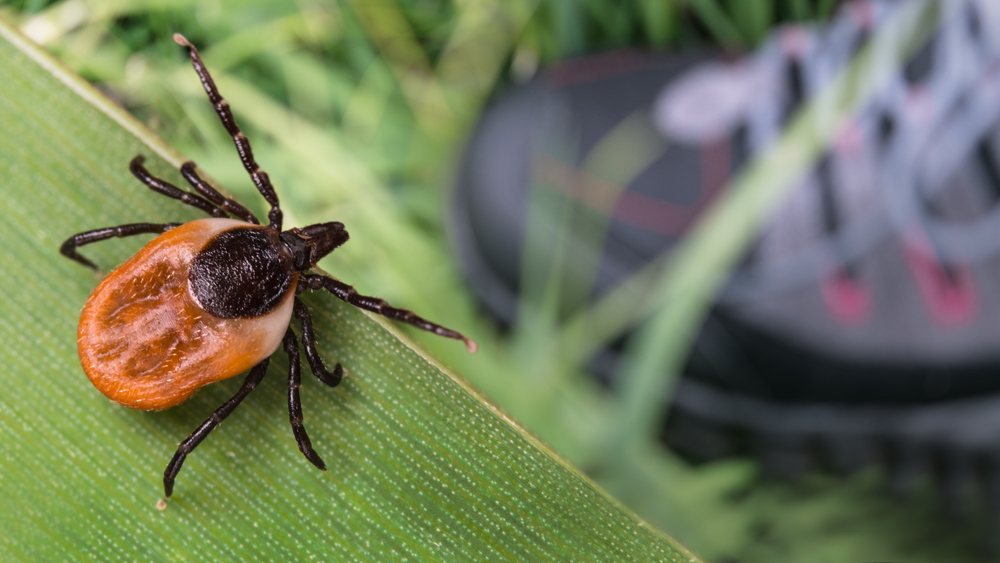Ticks are prevalent in New Jersey, and according to the Centers for Disease Control (CDC), the state has a high incidence of Lyme disease. Our Companion Care Animal Clinic team knows that finding a tick on your pet can be upsetting, and we offer tips to help protect your pet from Lyme disease.
#1: Educate yourself about Lyme disease in pets
Lyme disease is a bacterial infection caused by Borrelia burgdorferi. First identified in Lyme, Connecticut, in 1975, the disease has since been reported in nearly all U.S. states and is most common in the Northeast and upper Midwest. Other important information includes:
- Transmission — Lyme disease is transmitted by hard-shelled Ixodes ticks. The blacklegged tick is the predominant vector in the Northeast and Midwest. Transmission most likely occurs during the warmer months when ticks are most active, although they can remain active as long as temperatures are above 40 degrees, so transmission can occur all year long. Ticks must remain attached for at least 24 hours to transmit disease.
- Disease in dogs — In dogs, most clinical signs are non-specific and include fever, lethargy, swollen lymph nodes, painful joints, and shifting limb lameness. Dogs with Lyme disease can also experience kidney injury that can result in acute or chronic kidney failure.
- Disease in cats — While cats commonly test positive for Lyme disease in endemic areas, whether or not they experience clinical disease is controversial.
- Diagnosis — When Lyme disease is suspected, the Lyme multiplex assay can detect disease and determine infection stage. Other diagnostics, such as a complete blood count, biochemistry profile, and X-rays, may also be performed to rule out other conditions and assess your pet’s joint and organ damage.
- Treatment — Lyme disease is usually responsive to a particular antibiotic class. Treatment takes at least four weeks, and in some cases, signs return when antibiotics are stopped. Supportive care is necessary for Lyme-associated kidney injury.
#2: Provide year-round tick prevention for your pet
Year-round tick prevention medication is the easiest and best way to protect your pet from ticks. These medications work by disrupting the tick’s nervous system, eventually killing the tick. They don’t prevent a tick from attaching to your pet, but they do prevent the tick from finishing their blood meal and transmitting disease. Numerous products are on the market, but medications that work best require a veterinary prescription. Our team can determine what the most appropriate product for your four-legged friend.
#3: Check your pet for ticks
Ticks removed promptly cannot transmit Lyme disease, so check your pet regularly, especially after outings. Ticks can attach anywhere on your pet, but common places include:
- Ears — Ticks like to crawl down into the ear canal, so inspect your pet’s ears thoroughly.
- Eyes — Ticks commonly attach around the eyes and can be mistaken for skin tags. Check to ensure lumps around your pet’s eyes don’t have legs.
- Under the collar — Ticks may hide under your pet’s collar, and you should remove their collar to check thoroughly.
- Under the tail — Ticks like dark, moist areas, so under your pet’s tail is a perfect attachment spot.
- Groin and armpit — Ticks commonly attach in these areas.
- Paws — The close proximity to the ground makes your pet’s paws a convenient tick attachment location, so ensure you check between your pet’s toes.
Many ticks are tiny, and you should run your fingers over your pet’s body and part their coat to find unwanted passengers.
#4: Remove ticks on your pet promptly
If you find a tick on your pet, remove the parasite as soon as possible to help prevent disease transmission. Steps include:
- Treat with alcohol — Place an alcohol-soaked cotton ball at the attachment site. In some cases, this is enough to make the tick release.
- Grasp with tweezers — If the tick doesn’t release, firmly grasp the tick with fine-tip tweezers as close to the skin as possible, and steadily pull up, avoiding twisting or crushing the tick, which can cause them to release pathogens.
- Preserve the tick — Place the tick in alcohol so you can identify the species and determine if they can transmit disease.
- Clean the bite wound — Clean the bite wound with soap and water.
- Monitor your pet — Monitor the bite wound for infection, and monitor your pet for Lyme disease signs, which can take three to five months to manifest.
#5: Don’t assume your indoor pet is safe
Ticks can find their way indoors not only through small cracks and crevices, but also by hitching a ride on you or other household pets who are allowed outdoors. All your household pets need a year-round tick preventive that will protect them from ticks, as well as other problematic parasites, such as fleas and heartworms.
#6: Make your yard tick-safe

Steps to make your yard less attractive to ticks include:
- Clear tall grasses and brush around your home and at your lawn edges.
- Mow your lawn frequently and keep leaves raked.
- Restrict tick migration with three-foot-wide barriers of wood chips or gravel between lawns and wooded areas and around patios.
- Stack wood neatly in a dry area.
- Discourage wildlife from entering your yard. Do not leave out food, and consider constructing a fence.
Following these tips should help protect your four-legged friend from ticks and Lyme disease. Contact our Companion Care Animal Clinic, so we can determine the best tick preventive for your pet.







Leave A Comment